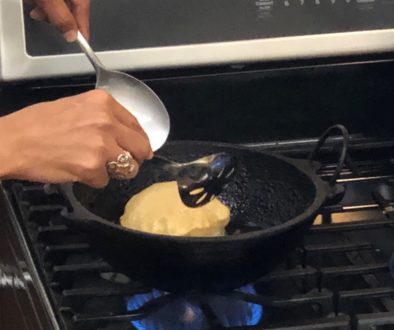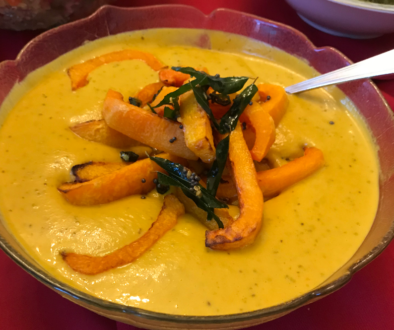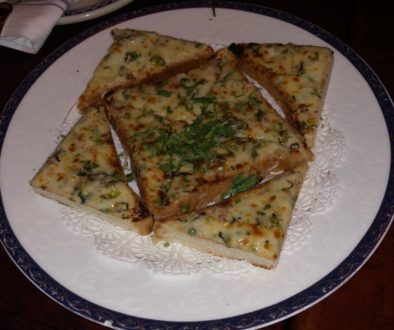Rahi Restaurant: An Artisanal Food Experience
By Annie Kang
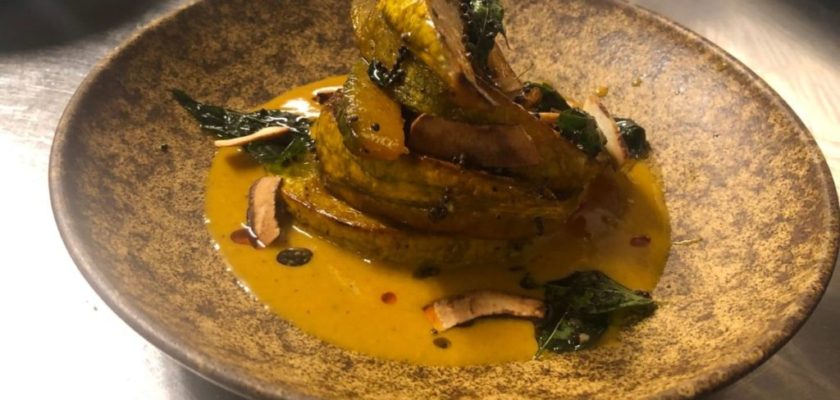
Pumpkin Coconut Curry at Rahi Restaurant
In 2020, I began teaching an Indian food, blogging and photography class at Willliams College, Massachusetts. At each session, students prepared a protein, lentil, vegetable, and bread or rice dish. We concluded the class by sitting around a table, talking and eating all the delicious food prepared.
The class included a Jackson Heights restaurant tour and we observed two chef’s – from Drunken Munkey and Rahi – demonstrate their cooking skills. Below are some of my student’s blog posts.
I did not know what to expect when I walked into Rahi on a brisk, sunny afternoon. Nestled on Greenwich Ave in West Village, Rahi’s simple exterior with white window sills that showcased the sleek, modern-looking interior contrasted what one usually imagines when thinking of an Indian restaurant. Having heard of Adda’s renown (a restaurant also by Chef Chintan Pandya) in New York and having been to the restaurant myself, I had high expectations for this culinary experience. Yet it was a general feeling of excitement rather than a clearly outlined idea of what I was about to encounter. After all, what does it mean for Indian cuisine, or any cuisine, to be “artisanal”? I was about to find out.
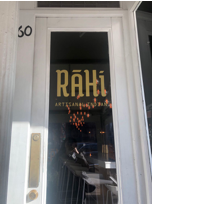
My eye was immediately caught by the black and white murals with gold accents painted on the brick wall. In a street art style, the murals displayed influences from traditional Indian art and design, yet added a very artistic and contemporary vibe to the restaurant’s internal decorations. Many of the art pieces, we were told, were thoughtfully curated to exhibit artworks created by emerging artists from India. The murals in particular are meant to reflect the designs of a travel diary and done by an Indonesian and Australian couple, who were inspired from their adventures in Rajasthan.
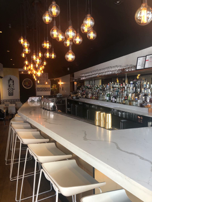
The complementing of the white marble countertop at the bar with the wooden panels and hanging lights created a trendy and inviting ambiance—one that heightened my anticipation for the food, which I hoped to be equally as creative.
We were greeted by Chef Chintan who introduced us to the concept behind Rahi. Trained in New Delhi and Mumbai, Chintan was the head chef at Junoon before starting his first of several business ventures in New York. Frustrated at the one-dimensional, commercialized way Indian food is portrayed in this country, he wanted Rahi, which means traveler, to showcase the different spectrums of Indian food from a vast, culturally diverse country. For Chintan, the cornerstone of expressing this diversity is constant innovation—an ever-changing menu of dishes that don’t look traditional but taste Indian. Unlike most people who will stick with a menu once it has proven to be successful, Rahi does the exact opposite.
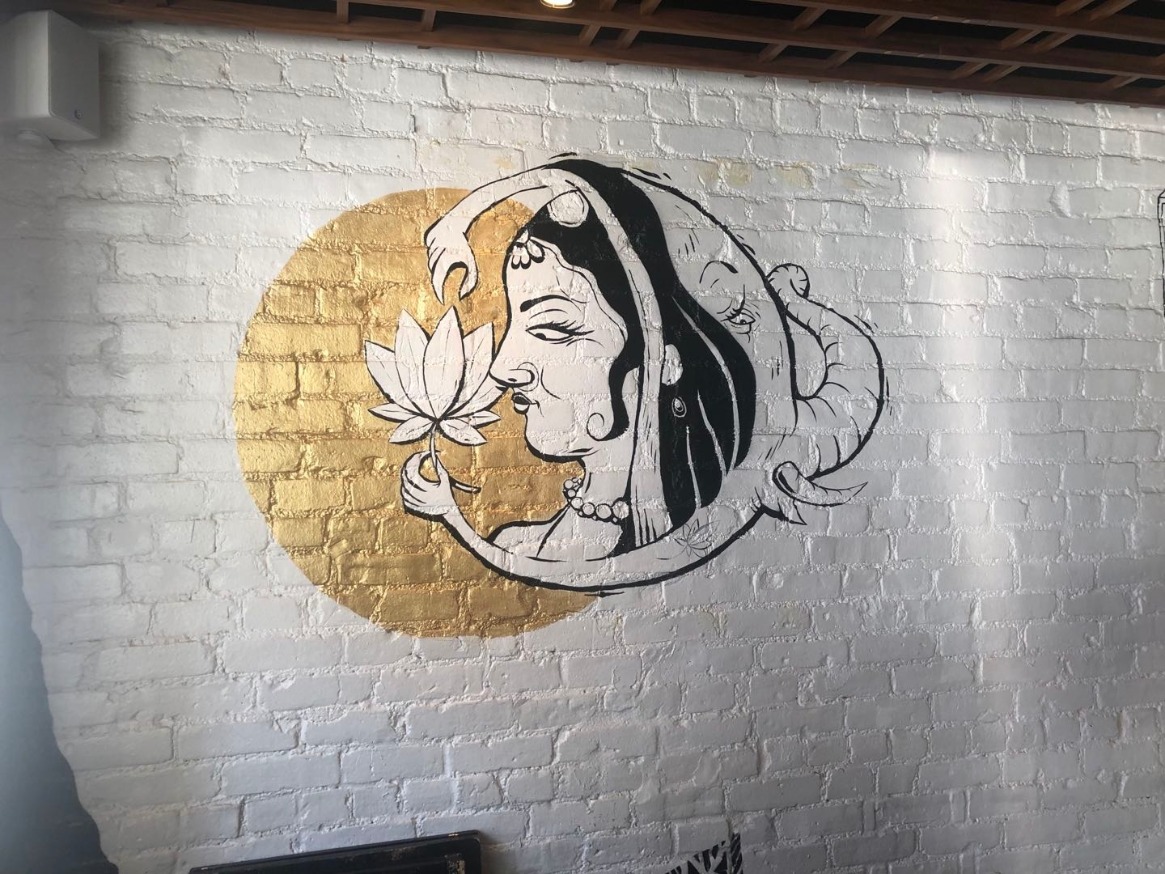
“The goal at Rahi is to change the menu as often as possible,” Chintan shares his vision with us. If a dish works, they stop making it at Rahi and move on to innovate another one. But if it doesn’t work, they will continue to work on it until they have mastered the dish. (Tip from the chef: if given 48 hour notice, the restaurant can recreate a previous dish that has gone off the menu.) However, this unceasingly innovative menu doesn’t come easily. Creativity requires a lot of research through reading different cook books, techniques, and finding inspiration in the diverse cuisines from the Indian subcontinent and around the world.
The thought behind each creation clearly shone through, as beautifully plated dish after dish came out on the table. In front of me was a feast consisting of pumpkin coconut curry, chicken tikka, cauliflower korma, three mango cod among others. My favorite perhaps was the artichoke chaat with crispy spinach leaves, tamarind and pomegranate. The mixture of textures and contrasting sweet, sour and salty flavors were very delightful and addictive. As I savored the last piece of artichoke, I realized that this is exactly the kind of experience that people come back to Rahi for: the creative expression of delicious food made with the building blocks that are foundational to Indian cuisine.


Annie Kang is a senior at Williams College, a History and French double major. Growing up in Hong Kong and Shenzhen, China, she can often be found trying new restaurants in the city and assisting her mom in the kitchen. An avid traveller, she loves tasting foods from different cuisines, and exploring restaurants and food cultures.





